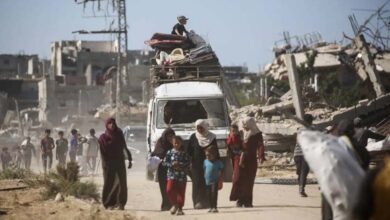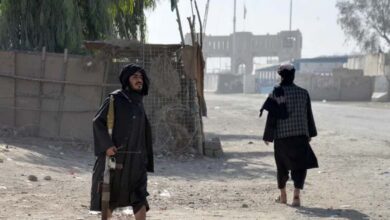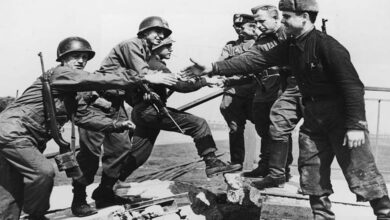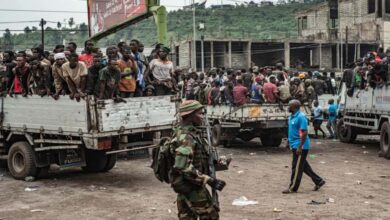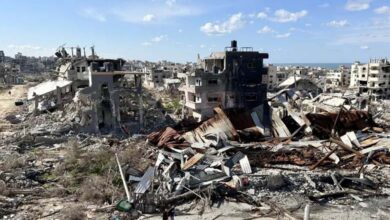On the second anniversary: how did Hamas carry out the October 7 attack?
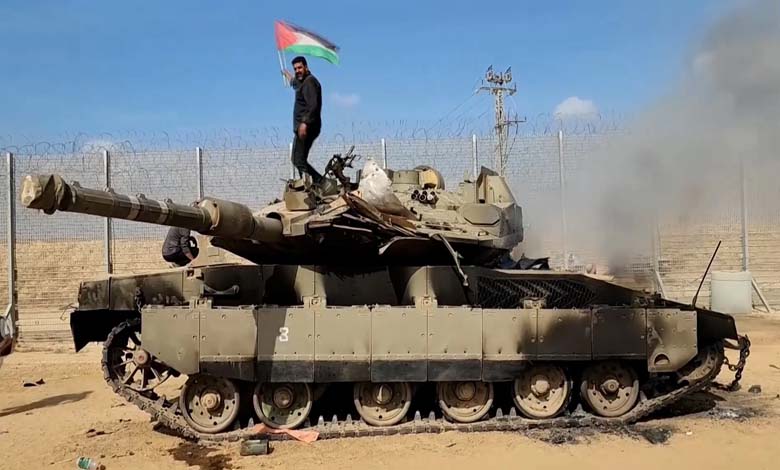
On October 7, 2023, Hamas’s instruction “go to dawn prayer” was not merely a call to worship but a coded signal that launched an unexpected assault that would shake Gaza and the wider Middle East.
At 04:00 on the morning of October 7, Hamas leaders in Gaza issued an unusual order: “Anyone who attended training sessions and did not intend to go to the dawn prayer at their usual mosque must go.” According to The Guardian, this was the initial “zero hour” signal for the operation dubbed “Al-Aqsa Flood,” a coded message whose key was known to senior commanders before being passed down through the movement’s ranks.
-
Recruitment, Tunnels, and Surprises: Israeli Intelligence Unveils Hamas’s Plans
-
Quarter of a million displaced from Gaza City as Israel vows to defeat Hamas
An hour later, groups of Hamas fighters dispersed toward different directions. New verbal orders followed: bring weapons and ammunition and gather at specific locations. The plan deliberately excluded the use of electronic communications; orders were transmitted orally to minimize the risk of interception.
Until that moment, many—even within Hamas—were not fully aware of what was unfolding, a factor that proved pivotal to the operation’s execution, the newspaper reports. Rapidly and in a coordinated manner, fighters rearmed with additional weapons: light and heavy machine guns, rockets, explosives and sniper rifles, awaiting further instructions. The Guardian notes that militants had trained on these weapons beforehand, which helped them handle them effectively—they had not realized they were training for a pre-planned operation.
-
Trump Denies Approving Israeli Strike on Hamas Leaders in Doha
-
Israel Fails to Assassinate Khalil al-Hayya, Hamas’ Voice Abroad
At 06:30, final written orders were issued: fighters were to move through breaches in the fence surrounding the Gaza Strip created by explosions or by cutting the wire, then attack Israel on the other side. Simultaneously, Hamas launched a barrage of rockets that triggered air-raid sirens in distant cities such as Tel Aviv and Be’er Sheva. The movement claimed to have fired 5,000 rockets in the initial salvo; the Israeli military put the figure at roughly half that number (about 2,500).
For a time, smoke rose above Israeli residential areas, noise and panic spread, and people rushed for cover as sirens sounded across the region. The rocket fire provided cover for an unprecedented infiltration by militants along multiple axes—a surprise, simultaneous assault carried out as the sun rose, footage later published by the movement shows.
-
Gaza Truce: Trump Anticipates a Deal Soon, Hamas Responds
-
Intensive Mediation Efforts… Details of the Last Chance Negotiations Between Israel and Hamas
On how orders were transmitted, The Guardian cites multiple sources: Israeli intelligence officials, excerpts from interrogations of captured Hamas fighters, statements by the movement and the Israeli military, and expert analysis. The paper highlights the oral transmission of instructions as a tactic that allowed Hamas to deceive one of the world’s most powerful surveillance systems and to conceal any hint of the attack from potential informant networks.
The principal planners were reportedly Yahya Sinwar, then leader of the movement in Gaza, and Mohammed Deif, commander of its military wing, the Izz ad-Din al-Qassam Brigades, and of an “elite” unit—both of whom were later killed in Israeli strikes, according to reports. They designed a tightly compartmentalized plan: orders were first delivered to brigade commanders, then to faction leaders, team commanders, and in the final phase to neighbors, relatives and participants in twice-weekly training sessions.
-
Gaza Truce: Washington Delivers Principles of a Comprehensive Deal to Hamas via Israeli Mediator
-
What Is the Fate of the Gaza Truce? Hamas Responds to Witkoff
When the border fence was breached, it was not only Hamas fighters who entered; elements of the Islamic Jihad movement reportedly joined as well, often after learning of the assault. Civilians from Gaza also streamed amid chaotic scenes, while Israeli security forces, by many accounts, responded with confusion and delay. No one at the time could have imagined that the incident would ignite a war that would reduce large parts of the Strip to ruins, displace its population and claim tens of thousands of lives.
As the second anniversary approaches of an attack that, by Israeli figures, killed roughly 1,200 people and saw more than 250 taken hostage, Gaza’s residents hope the war will end so they can return—even to rubble—and search among the wreckage for traces of loved ones and what remains of their shattered lives.



